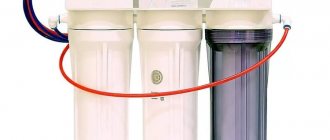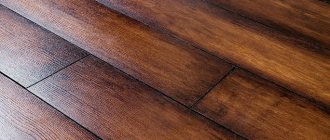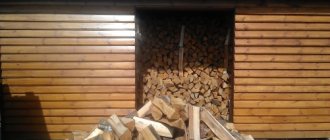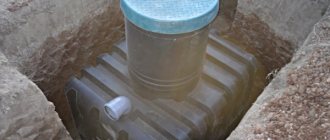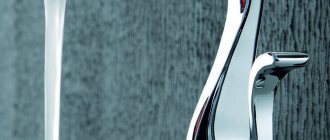A paint and varnish substance, the main component of which is natural, vegetable oils, forming a thin layer in the form of a film on the treated surface, is usually called drying oil. This composition is an ideal option for processing wooden elements and structures, helping to create a reliable protective layer from moisture and various parasites.
Natural drying oil
Drying oil mainly contains only natural, specially processed oils; the amount of additional, synthetic additives is negligible. Oil is obtained from various plants: flax, sunflower, hemp, rapeseed and so on.
FAQ
| Question | Answer |
| In what proportion are thickly grated paints diluted? | Thickened paints are made on different bases, so the instructions for each case are different. Personally, I use a universal recipe - slowly add “Oxol” to the base and stir until the consistency becomes like liquid sour cream. |
| Is it possible to dilute silver with drying oil? | Yes, you can make good paint with drying oil, but just keep in mind that such silver will not be heat-resistant. On average, the proportions are 1:3 or 1:4. Below in the video in this article you will find relevant information on this issue. |
| How to dilute drying oil |
|
| How to make paraffin impregnation on drying oil. |
|
| Is it possible to make drying oil with your own hands? | Yes you can:
|
Flaxseed oil
This is a transparent solution with an oily structure, the main component of which is linseed oil. This liquid also contains a small amount of drier.
Flaxseed oil is successfully used to treat various wooden surfaces both indoors and outdoors. If necessary, linseed oil can be used to dilute putty, various putties, paint, and so on.
The drying oil drying period is about a day, provided that the air temperature is about 20 degrees Celsius.
Video description
From the video you can find out how the temperature of impregnation affects the depth of penetration using linseed oil as an example:
To determine the naturalness of the material, it is enough to take a closer look at the transparency and color. Real products always have a tint. Additionally, you need to familiarize yourself with the certificates (conformity, hygienic for Oxol) and production regulations (GOST, TU).
In the case of preparing silverfish in drying oil, you must understand that the heat resistance of aluminum will be reduced to nothing. If drying oil from a synthetic group is used, then you should give preference to slate, which forms a weather-resistant film.
No sediment – drying oil quality Source obi.ru
It is better to treat expensive types of wood with natural drying oil. Fences can be impregnated with Oxol or a combined composition. When choosing drying oil, it is easier to evaluate it when it is in a transparent container - it is easier to see the presence of sediment. If it is available, then the quality of the product is low.
Hemp drying oil
An oily composition, rather dark in color, made from hemp oil. The solution additionally contains a small amount of drying agent.
Widely used for processing wooden and metal surfaces and parts, excellent for thinning, as well as preparing putty, paint, various putties and so on.
Ways to prevent odor before starting work
If the repair process involves working with drying oil, it is better to find out in advance how to remove the smell. However, you can reduce the concentration and it will help it fade faster. To do this, you can use these tips.
- Before painting, leave the windows open and turn on the fan. The blades of the equipment must operate in such a way that the air flow is directed outward from the room.
- In rooms with high humidity, it is better to pre-dry the air using an air conditioner or heater.
- You can add a small amount of essence with mint, lemon or vanilla aroma to a jar of drying oil.
If you have to interrupt work for a short period of time, you must close the container tightly. And after completing the repair, it is better to get rid of the rollers and brushes that were used to apply the solution.
Semi-natural drying oil. Oxol
This type of drying oil contains sunflower oil, processed in a certain way, its share is more than 50 percent, various solvents and driers. It is worth noting that mineral oils and various surrogates are not contained in oxol.
The technical characteristics of drying oil make it possible to use various other materials simultaneously with it in order to obtain a high-quality coating. In this case, the fluid consumption completely depends on the professionalism of the technician.
Oxol is a transparent, oily in structure, homogeneous composition, brown in color. After treatment with drying oil, a fairly hard, moisture-resistant coating is formed on the surface, characterized by increased resistance to atmospheric conditions.
Briefly about the main thing
Drying oil has protective properties against moisture, insects, fungus, mold and bacteria.
By nature, the material can be natural or synthetic. The former are made from vegetable oils and are suitable for interior work. The latter dry worse, smell stronger and are used outdoors.
Apply the composition in 2-3 layers with a brush or roller.
Drying oil Oxol is the general name for a group of semi-natural impregnations. Depending on the basis and recommended use, they are divided into types such as B, PV, SM.
Drying oil Oxol is used as an independent impregnation for wood, primer for oil compositions, thinner for paints, varnishes, putties or plaster.
Ratings 0
Combined drying oil
The method for producing combined drying oil is somewhat different from other types of similar solutions. The oils necessary for the production of drying oil undergo polymerization and dehydration.
In addition to oils, the composition of combined drying oils includes special solvents and a small amount of driers. These liquids are used mainly for the manufacture of certain types of paints.
Specifications
The mechanism of action of drying oil is based on the physical properties of its constituent components.
If vegetable oil is applied to any surface and left in the fresh air, then under the influence of heat, sunlight and oxygen it begins to thicken. If the oil is applied in a thin layer, it dries and forms a semi-solid composition. This quality is characteristic of such oils, the main components of which are linolenic and linoleic acids. Moreover, the higher the concentration of these acids, the more pronounced they exhibit the property of hardening.
The content of these components usually varies in different types of oils. For example, in flaxseed oil their share is 80%, in hemp oil - 70%, but in sunflower and nut oil their content is less - from 30 to 45%, and in olive oil the acids are 40%.
Mineral-based oils do not contain fatty acids at all, which is why they do not dry out in the air.
However, in their natural form without heat treatment, vegetable oils oxidize quite rarely, even if they contain fatty acids in significant quantities. That is why, in order to stabilize the wood and shorten the drying period, the composition is processed and driers are introduced into it - various metal salts, which significantly reduce the drying time of the oil. Thanks to this composition, drying oil can dry from 6 to 36 hours after application, but, as a rule, modern products harden within a day.
Scope of application of various types of drying oils
- Primer of concrete, metal, plastered surfaces for painting, both indoors and outdoors.
- Production of putties, mastics and paints.
- Dilution of some types of paint.
- Treatment and impregnation of wooden surfaces.
Ways to neutralize odor after renovation
There are several ways you can find out how to get rid of the smell of drying oil after applying it. It's better to start with simpler options and then move on to more complex ones. It is important to follow these recommendations.
- Ventilating the premises is the easiest action to take if there is an unpleasant odor. In summer, you can leave the windows and doors open for three days. In winter, periodic access to fresh air through the windows is enough, so the smell disappears faster.
- If the surfaces inside the apartment have not been opened with varnish, then smoke treatment is performed. To do this, 48 hours after airing, take a roll of newspapers, preferably old ones, and set them on fire. The paper should smolder. They fumigate the rooms one by one, paying special attention to the places where drying oil was applied and a persistent smell remained. This method is very popular. You can also light several candles, including aromatic ones, in the rooms where you worked with drying oil.
Attention! It is necessary to close the room with smoke for 20 - 30 minutes, and then ventilate again.
- Additional products that are placed throughout the rooms will help remove the smell of drying oil. These include containers of water, jars of salt, soda with ammonia or coffee. Moreover, it is enough to turn whole grains daily, having previously laid them out on sheets of paper.
- After coating with drying oil, wet cleaning is carried out. Add mustard to the water at the rate of 2 tablespoons per 10 liters of water. A solution of vinegar essence or ammonia will help reduce the smell. To do this, 15 ml of the active substance is diluted in 5 liters of water.
- Charcoal, which is placed indoors, has absorbent properties.
Treatment with drying oil remains a popular method of coating products and surfaces. Following the application rules and recommendations after completion of the repair will prevent unpleasant moments, as well as quickly eliminate the consequences in the form of an unpleasant odor.
Features of choice
When choosing the appropriate type of drying oil, you need to pay special attention to some nuances:
If possible, assess the degree of transparency of the liquid in the package. Natural drying oil, as seen in the photo, has a dark brown color and has no sediment.
Read the label carefully. It usually contains detailed information about the composition of the liquid, manufacturer, instructions for use, and so on.
You should definitely check the availability of a certificate of product quality, especially for natural drying oil.
High-quality drying oil is a transparent liquid, without sediment, pungent odor or foreign impurities. The color palette of drying oil is quite scarce; the color of the liquid varies from light brown to dark brown.
Quick-drying, odorless paint for interior work - main types, selection tips and benefits of useThe best aerosol paint in cans - main types, application features and advantages of use
The best water-based paint - ranking of the best manufacturers of 2018
You should not buy liquids based on fuse and scop, since the surface treated with such solutions cannot be dried. It will also not be possible to paint over such a coating.
In order to achieve durability of the treated surfaces and significantly simplify the processing process, it is necessary to correctly select the optimal drying oil option. You can completely cope with the choice yourself, the most important thing is to take into account all the necessary parameters
Video description
How to properly treat wood with natural drying oil is shown in the video:
Oxol – semi-natural drying oil
Knowing what natural drying oil is, it is easier to decide what Oxol drying oil is, because in fact it is just a general name for semi-natural oil impregnations.
To understand the difference between Oxol and natural drying oil, let’s look at the features of the composition. In semi-natural oils, natural oils make up not 97, but, as a rule, 55% of the total volume of drying oil. The remaining 45% are solvents (40%) and driers (5%), due to which, by the way, when working with Oxol, an unpleasant odor appears that takes a long time to dissipate. It is clear that the quality of semi-natural drying oil is lower, but the cost of the finished composition is noticeably lower.
Based on their application, there are 3 subtypes of Oxoli:
- B (based on linseed or hemp oil) – used as a thinner for oil paints for exterior use;
- PV – intended for preparing putty solutions;
- SM - added to primer compositions for treating walls with ceilings indoors.
Marking Oxol Source wp.com
The fact that Oxol is lower in quality than natural drying oil is immediately visible when the treated surface is exposed to mechanical stress - the protective layer begins to collapse. The low strength of the dry residue of semi-natural drying oil is the reason that it is unsuitable for impregnating floor coverings. If you still have to use Oxol for them, then additional varnishing or painting of the surface is necessary.
In general, like natural drying oil, Oxol forms a film that prevents deep penetration of painting materials, which significantly reduces their consumption. The dry residue also provides protection to the base and improves adhesion of the surface to paintwork materials. Self-transparent with a slight sheen, the film copes with moisture and easy cleaning, biological phenomena and weather conditions. One liter, as a rule, with a single layer application is enough for 4-5 sq.m.
When working with impregnation, it is important to protect the skin from solvents and ensure ventilation in the room. It is also necessary to avoid direct contact with electricity and flame, as the composition is highly flammable. You cannot use heaters, fans, or create drafts to speed up the drying process, as this will lead to cracking of the coating.
Photo of drying oil
How to choose façade paint for exterior use - a review of popular manufacturers and a rating of the best paints for exterior useWhich oil paint is better - a review of the best brands and criteria for selecting paints
The best interior paint for walls - 2021 rating and instructions for using interior paint
Natural materials – in search of safe ones!
If you have chosen wood for finishing your house, guided primarily by its environmental friendliness, then it will probably be important for you to comply with this condition to the end. After all, an environmentally friendly tree can be coated with so much chemicals with your own hands that any sense in using this material is lost.
And here a slightly forgotten drying oil enters the arena. Of all the film-forming materials that are on the market today, it is, objectively, the most natural. This statement is easily confirmed by the fact that most drying oils consist of natural oil (hemp, flaxseed, sunflower, etc.) - the percentage of natural components ranges from 45 to 95%.
Drying oil or, as it was called in the old days, “boiled oil” was known to master painters several centuries ago. Already in the 17th century, every artist used this material. Today, the technology for producing natural drying oils is practically no different from the methods known in ancient times. There are different types of this film former, the properties of which differ quite significantly.
Symptoms of poisoning
Intoxication when interacting with paints can be both acute and chronic.
Signs of acute paint vapor poisoning are:
- cyanosis (blue discoloration of the skin);
- nausea, vomiting;
- confusion, deafness;
- severe general weakness;
- dizziness, intense headache;
- sneezing, dry hacking cough;
- watery eyes, nasal discharge (rhinorrhea);
- sore throat, nasopharynx;
- feeling of a foreign body and burning in the eyes;
- noise in ears.
General symptoms may be supplemented by signs of poisoning of a specific solvent used in the paint. Thus, in case of poisoning with dimethyl ketone (acetone) vapors, damage to the nervous system occurs, the clinical picture of which is similar to that of intoxication. Intoxication with butyl acetate vapor is characterized by intense burning of the nasopharynx, oral cavity, and eyes.
In case of chronic intoxication, which is more common among people who come into daily contact with paints and varnishes, symptoms of poisoning appear gradually over a long period of time:
- deterioration in general health, decreased mood;
- digestive disorders (nausea, heartburn, belching, bloating, stool disorders, lack of appetite);
- burning, itching in the eyes, conjunctival hyperemia;
- sleep disorders (insomnia, interrupted sleep, nightmares);
- persistent non-productive cough.
How dangerous is paint poisoning?
Toxic fumes affect the digestive, circulatory and nervous systems. With prolonged contact with paints and varnishes, their effect may not be visible externally, but at the same time slowly poison the body. Acute paint poisoning is no less harmful - it leads to disorders of the digestive, circulatory and nervous systems. If a person carries out repairs alone, he may feel a sharp, sudden weakness or lose consciousness - and will not even be able to call for help.
After inhaling toxic fumes, the following phenomena occur in the body:
- functional disorders in the functioning of the cardiovascular system develop - arrhythmias, hypotension;
- the functioning of the respiratory system is disrupted due to a chemical burn, which provokes insufficient oxygen supply, dizziness, and headaches;
- visual function decreases due to irritation of the mucous membrane.
The paints used for wall decoration can cause the greatest harm to the body:
- aerosol - quickly penetrate the respiratory system due to the finely dispersed form of the particles;
- alkyd (especially oil) – contain harmful chemical additives that a regular respirator will not protect against;
- adhesive - are a mixture of synthetic oils and adhesive solution, which negatively affects human health.
All of them are highly toxic and require strict adherence to safety regulations. The following types of paints and varnishes are considered relatively harmless:
- silicate - do not pose a danger if direct contact is limited and proper ventilation of the room is ensured;
- emulsion - non-toxic, do not have an unpleasant odor, do not provoke allergic reactions;
- water-dispersed - do not contain solvents.
From a medical point of view, there are two types of poisoning:
- acute, occurs in the case of one-time intoxication, is characterized by pronounced symptoms, causes significant damage to health;
- chronic, observed in professional builders, characterized by general depression, weakness, and the development of depressive states.
If poisoning from paint fumes occurs systematically, the effects of toxins may take several months to appear. In case of acute intoxication, signs of paint poisoning are noticeable within a few hours. The way toxins enter the body may also vary:
- inhalation of paint fumes;
- inhalation of combustion products of old finishing;
- ingestion of paint;
- close physical contact (penetration through skin pores).
The first two options pose the greatest health hazard. They are also the most common among professional builders and DIY home repair enthusiasts.
Common symptoms of paint poisoning include:
- the appearance of unbearable headache;
- paleness of the skin;
- tingling sensation on the skin;
- increased tearfulness;
- sneezing, swelling of the nasopharynx, cough;
- irritation of mucous membranes;
- nausea, vomiting and diarrhea (in some cases);
- pain in the liver area;
- unpleasant taste on the tongue, bad breath;
- difficult and painful inhalation;
- disorientation;
- temperature rise to 39 degrees;
- dizziness, drowsiness, loss of consciousness.
In addition, specific symptoms are possible, differing depending on the toxic component:
- acetone vapor gives your breath a pronounced chemical aroma;
- butyl acetate provokes a burning sensation in the nasopharynx, eyes and mouth;
- trichlorethylene and acetone cause euphoria, similar to alcohol intoxication.
Chronic intoxication, which is observed in almost all professional workers, is characterized by the following symptoms:
- regular headaches;
- apathy, depression, fatigue;
- dry non-productive cough;
- digestive disorders;
- irritation and dryness of mucous membranes;
- sleep disorders;
- lack of appetite.
How does paint vapor poisoning occur?
The most dangerous paint components are solvents (toluene, dimethyl ketone, butanol, butyl acetate, etc.). Possessing high volatility, they have a local irritating effect on the skin, mucous membrane of the eyes, nasopharynx and oropharynx. Penetrating into the respiratory tract and then into the lungs, these substances can cause a number of acute respiratory diseases, a relapse of chronic pathology or an allergic reaction in persons with a predisposition. Toluene is able to penetrate not only through the respiratory organs, but also through intact skin, causing damage to the central nervous system of varying severity, including irreversible ones.
Once in the body in large quantities, solvents cause acute general intoxication.
The maximum permissible concentration, which characterizes the degree of harmfulness of the solvent, is individual for each chemical substance.
Most often, paint vapor poisoning occurs during painting work:
- painting large surfaces;
- working with paints in a room where there is no adequate ventilation;
- Carrying out painting work in a room with high temperatures, when increased evaporation of solvents occurs;
- work without personal protective equipment (respirator, gloves);
- use of low-quality material with excessively high content of heavy metals and solvents;
- independent dilution with solvents of paints that have lost their performance characteristics.
You can suffer not only from volatile compounds when working with fresh paints, but also when scraping off old paintwork or burning painted decorative elements.
First aid for paint vapor poisoning
At the first symptoms of acute paint vapor poisoning, you must:
- evacuate the victim from the place of exposure to toxins;
- ensure a flow of fresh air (open windows, doors, unbutton tight clothes);
- give plenty of alkaline drinks (milk, mineral water);
- If paint or solvent gets on your skin, rinse immediately with plenty of water.
In case of chronic poisoning, first aid measures are ineffective; qualified medical assistance is required.
